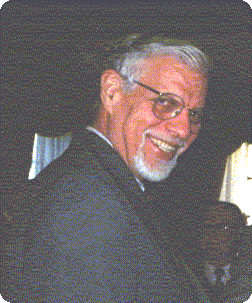 |
Distinguished Lecture Series in Statistical Science
April 23 and 24, 2003 - 3:30 p.m.
|
Don Dawson
Mathematics and Statistics, Carleton University and McGill
University
Probabilistic Phenomena in Mathematics and
Science
|
 |
Probability has a long history going back to
the 17th century with major landmarks in the works of Fermat,
Pascal, Bernoulli, Bayes, de Moivre, Laplace and Gauss but
it was in the 20th century that it blossomed into one of the
core areas of the mathematical sciences. This development
was fed from two sides. On the one hand the developments in
analysis including measure theory and partial differential
equations were an essential ingredient for the development
of the subject as we know it today. On the other hand the
transformation from the deterministic world view to a probabilistic
viewpoint in physics - statistical mechanics, Brownian motion,
quantum physics, the role of probability in evolutionary biology
and population genetics and the probabilistic modelling of
social phenomena including Bachelier's now celebrated introduction
of probabilistic models of financial markets served as a powerful
catalyst for this development. Probability now plays a central
role in science and mathematics. Probability and statistics
link the mathematical world of theoretical models and the
empirical world of experimentation and data collection. In
particular probability provides a rich universe of models
and also serves as an essential component in the development
of statistical methodology for the analysis of empirical data.
Moreover probability also plays a special and increasingly
central role in mathematics in that it forms a natural link
between the continuum world of analysis and physics and the
discrete world of combinatorics, computer science, Monte Carlo
simulation and bioinformatics. Today probability is an essential
tool in the study of many fields including statistical physics,
complex manufacturing and communications networks, finance,
risk assessment, image analysis, analysis of algorithms, perception
in artificial and natural systems and genetics and ecology.
|
|
|
In response to challenging problems arising across this spectrum
of applications, the subject has undergone a remarkable development
with the emergence of new probabilistic objects and methodologies.
In the first lecture I will sketch some strands of these developments
with emphasis on some probabilistic structures that not only capture
the essence of an entire range of probabilistic phenomena and
but also appear in unexpected places.
The second lecture will trace more recent developments in the
theory of stochastic processes with emphasis on their applications
to multiagent systems, hierarchically structured populations and
spatially distributed systems.
Biography
Donald Dawson received his Honours B.Sc. in Mathematics and Physics
from McGill University in 1958 and his doctorate from MIT in 1963.
He has taught at both McGill University and Carleton University
and is currently Professor Emeritus and Distinguished Research
Professor at Carleton and Adjunct Professor at McGill. He has
been a co-director of the Carleton-Ottawa Laboratory for Research
in Statistics and Probability since 1982 and served as Director
of the Fields Institute from 1996-2000. His research interests
include large deviation theory, stochastic differential equations,
stochastic partial differential equations, measure-valued processes
and applications of probability to statistical physics, genetics,
finance and communications. He is a Fellow of the Royal Society
of Canada. He has given numerous invited lectures; including the
1991 Gold Medal Lecture of the Statistical Society of Canada,
the 1994 Jeffery-Williams lecture of the Canadian Mathematical
Society, an invited lecture at the 1994 International Congress
of Mathematicians in Zurich, and a plenary lecture at the 1996
World Congress of the Bernoulli Society in Vienna. He has been
a member of the editorial boards of a number of journals and Co-Editor-in-Chief
of the Canadian Journal of Mathematics from 1988 to 1993. He has
served on a number of NSERC committees including the Mathematics
and Statistical Sciences GSC's, Research Manpower, Postdoctoral
Fellowship, International Relations and the 1995 Task Force on
Strategy Implementation.
|
back to top
Distinguished Lecture Series in
Statistical Science Index
|
 |